
Issue #73: Thursday 26 September, 2024
It’s been four weeks since the last issue, a much longer gap than I prefer. It’s not that I haven’t been reading; but I hit a bit of writer’s block, or perhaps a “review block” and found it very difficult to get started on reviewing the books I’ve been reading. However, I eventually managed to get up enough enthusiasm, so here we are.
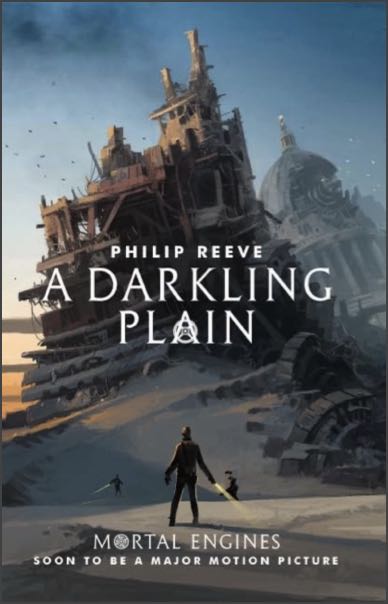
This is the final book in the Mortal Engines Quartet. It’s the longest in the series, and quite a long book for one aimed at an early teenage market. My Scholastic paperback edition runs to 523 pages.
The title is of course drawn from the poem Dover Beach by Matthew Arnold, an excerpt from which is used as an epigraph to this book, and very apt it is:
And we are here as on a darkling plain,
Swept by confused alarms of struggle and flight,
Where ignorant armies clash by night.
The novel is packed full of incident, as the final culmination of the centuries-long war between the cities, mounted on vast traction engines, and Green Storm, the radical arm of the Anti-Traction League, comes to its shattering, and wholly unexpected conclusion.
There’s too much plot to summarise neatly, but against the background of the war, we follow the separate stories of young Wren and her father Tom Natsworthy; the African aviator Theo Ngoni; the resurrected Anna Fang and the Lost Boy called Fishcake; and in particular, Hester Shaw and her protector the Stalker Shrike.
The first entrance of Hester in this novel is striking:
The woman was tall, and very thin, and she carried a long gun on her shoulder. She was dressed all in black; black boots, black breeches, black weskit and a long black duster coat that flew out behind her like black wings when the wind caught it. In a place where everyone went masked or veiled you might have expected her to wear a black veil too, but she chose to go bareheaded. Her grey hair had been tied back, as if she wanted everyone to see that she was hideous. A terrible scar ran down her face from forehead to jaw, making it look like a portrait that had been furiously crossed out. Her mouth was wrenched sideways in a permanent sneer, her nose was a smashed stump, and her single eye stared out of the wreckage as grey and chill as a winter sea.
Her name was Hester Shaw, and she killed people.
Looking back over the whole series of four books, despite the far-future setting, despite all the fantastic machines and violence, the overarching thread is nevertheless that of a love story, the often-troubled but intense relationship between the gentle Tom Natsworthy and the fierce and damaged Hester Shaw. This book brings their long story to a close in a very tender way.
I enjoyed re-reading the series a good deal, and this final book is definitely the pinnacle of it.
If you can’t get enough of this kind of material, I can certainly recommend the prequel trilogy featuring a character called Fever Crumb. See my brief reviews of that trilogy below under “Past Reading”.

Adam Higginbotham wrote a truly excellent and deeply researched book about the Chernobyl disaster, called Midnight in Chernobyl, which I reviewed here.
Now he’s taken his forensic eye to the loss of the Challenger Space Shuttle. In working up to that tragedy, he covers much of the American space program and the workings of NASA and its subcontractors. He starts, inevitably, with the awful disaster of Apollo 1, which killed three astronauts in an inferno within their capsule. While lessons were learned from that event, a cavalier attitude to risk continued at NASA as they moved into the post-Apollo era.
Parts of the story are infuriating: the desperate yet futile attempts by engineers at Morton Thiokol, the makers of the Shuttle’s solid booster rockets, to have their serious concerns about the dangers of launching in cold weather accepted by their superiors and by NASA itself.
Parts are very saddening, as Higginbotham looks at the background of all of the crew members who were lost, such as Christa McAuliffe, a teacher who was being promoted strongly as the first “Teacher in Space”.
Higginbotham writes so well and so clearly that this book is as gripping as any thriller, even though we know the sad conclusion.
Filled with fascinating detail—the book is over 500 pages in length, with hundreds of notes and sources—this is a great read, highly recommended.

Not that it’s important to assign every book a genre, of course, but I am wondering where to place Yellowface. You could call it “literary” I suppose, which would be very appropriate given that it’s almost entirely about writing and the publishing industry; but at its core it’s basically a white-collar crime story, where the crime is the unusual one of plagiarism and fraud.
Rebecca Kuang is the author of the Poppy Wars trilogy, which I haven’t read but which seems to have been popular; and Babel; or the Necessity of Violence, which I have read and enjoyed. My review of the latter is here.
Yellowface is told from the first-person point of view of June Hayward, a young White woman who is an aspiring writer. She has long been jealous of her friend Athena Liu, who she has known since college. Athena has been having the literary success which June can only dream about, her own debut novel having languished whereas Athena has gone from strength to strength and from best-seller to best-seller.
The novel opens dramatically: The night I watch Athena Liu die, we’re celebrating her TV deal with Netflix. Athena does die, from asphyxiation after choking on food, with June unable to help.
It’s after the emergency services team have left Athena’s apartment that temptation strikes, and June picks up a typewritten manuscript from Athena’s desk. Apparently Athena had not told her agent or publisher she was writing this book, a significant departure from her previous novels.
A few months later, after having done some rewriting and additional research, June sends the book to her agent with her own name on the cover page.
It’s not long before the novel, titled The Last Front, finds an enthusiastic publisher. The wheels of publishing grind slow, however, and it’s not until after the anniversary of Athena’s death that the book finally arrives in bookstores amidst a blaze of publicity. It’s then that things start to go wrong and the threat of exposure looms.
Much of the book examines, in a mildly critical way, how the publishing industry works. There’s an interesting thread about racism and reverse racism in the industry: The Last Front focuses on the experiences of Chinese labourers brought to the European front in the First World War, and Hayward’s publishers release the book using the author name “Juniper Song”, genuinely Hayward’s first and second given names, but an obvious attempt to make it seem she is an Asian writer.
The novel also features some very realistic hate-storms brewed up on social media like Twitter (I’m sure these must be drawn from Kuang’s own experiences).
A pretty good read, overall. I particularly like the starkly simplistic cover for the book designed by Ellie Game: a solid yellow background with two eyes in black line-art, looking to one side as if in fear of discovery.
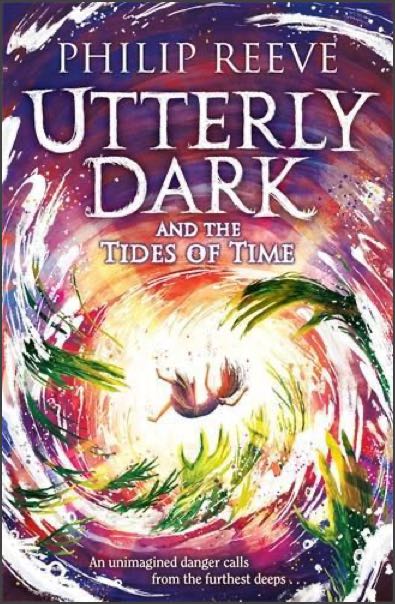
Yet another book by Philip Reeve? You bet. This is an entirely different series than Mortal Engines, and fantasy rather than science fiction/steampunk. It features a young girl whose odd name is Utterly Dark, who lives on one of the fictional “Autumn Isles” to the west of Britain during the Regency Period.
Forget your Harry Potters, this is much better stuff in my opinion.
This is the third book in the series, so I figure it’s OK to give spoilers to the first couple of books. Stop now if you haven’t read the first two, Utterly Dark and the Face of the Deep (review here) and Utterly Dark and the Heart of the Wild (review here).
In the first book, we learn that Utterly is the daughter of Andrew Dark, “the Watcher on Wildsea” and the human incarnation of the Gorm, a terrible sea monster who sometimes manifests as a beautiful woman. The Gorm is capable of invoking widespread destruction on the coast of Wildsea, but has a tender side, and motherly feelings towards Utterly.
In the second book, Utterly is forced to beg for help from the Gorm to save her friends trapped in the Underwoods and at the mercy of the powerful Hunter whose domain it is. In exchange for the Gorm’s help, Utterly had to promise to leave Wildsea and go to live with her mother under the sea.
In this, the third book, Utterly has had to fulfill her promise, and her mother takes her ranging through the oceans of the world to see the temples raised to the Gorm, and the human sacrifices that are made to appease her. And the Gorm also shows Utterly that she can range in time as well as space. “Time is not a river; it is a sea” she says. But in one such ranging through time, Utterly finds herself trapped in a future almost 160 years after her own time, and at the mercy of a creature perhaps more powerful than even the Gorm.
This is real page-turning stuff for younger readers, and I’m 73 years young! Highly recommended if you are looking for a gift for a young person in the 10 to 13 age group.
I don’t think there’s going to be a fourth book in the series, as this one ends too neatly and finally. But who knows? Reeve thought the first book was going to be a stand-alone.

Two very different books here! Devil’s Kitchen is the latest crime/thriller from Australian author Candice Fox. The Pickwick Papers is of course Charles Dickens’ first novel, full of comic incidents. I’m doing the latter as a production for Standard Ebooks, following up on my recent production of Nicholas Nickleby.
Since I have just completed my re-read of the Mortal Engines Quartet, I thought it made sense to reprint these short reviews I wrote about the books in the prequel series.
These reviews were originally written in June 2018.
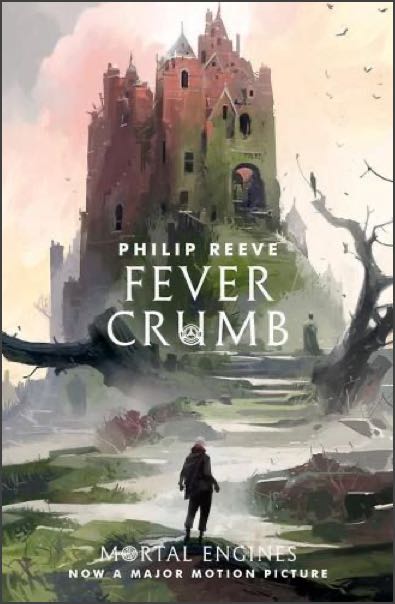
This is the start of a prequel trilogy to Reeve’s Mortal Engines series, set many generations before the events of those books.
It’s YA science fiction, set in a far future world in which cities like London have become mobile, mounted on vast traction engines, roaming the plains of what used to be seas in search of prey. In some ways this is an outrageous, perhaps absurd concept, but Reeve makes it work.
However, Fever Crumb is set in London well before cities become mobile. We meet with young Fever Crumb, the adopted daughter of Dr. Crumb, one of the city’s Engineers. The background of the story is that for centuries London was controlled by the Scriven: people with strange markings on their skin, which they attribute to their god, the Scrivener, who they say has written on their bodies to mark them out as superior to ordinary humans in every way. However, the Scriven were largely infertile and so over the years their numbers declined to the point that they could be overthrown and slaughtered by ordinary humans. This revolution is quite a recent one as the book opens.
Fever herself was found abandoned as a child by Dr. Crumb, and there is the suspicion that she herself is part-Scriven. She has no skin markings, but her eyes each have a different colour. That’s enough to mark her out as different to many. Raised by her father in the guild of Engineers, she has learned to discard emotion and seek a rational approach in everything she does. This approach, however, becomes more and more problematic as her life goes on.
At the same time, London is coming under threat from some savage bands from the North who travel about on huge motorised vehicles and who are advancing on the city en masse. The authorities are scrambling to find effective defences.
As part of this, Fever becomes caught up in a plot to dig up a secret vault of some old Scriven technology and put it to use. Under threat from several directions, Fever begins to have strange flashbacks of times long past. Does she have some connection to the Scriven after all?
Hugely imaginative and entertaining.
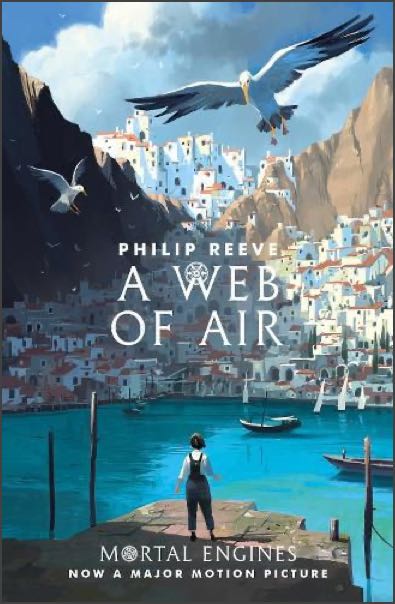
The second in the Fever Crumb series. At the end of the previous book, Fever has escaped pursuit in London and has taken up with a travelling theatre, which travels great distances putting on shows. She becomes the theatre’s resident electrician, using her engineering background.
As the story opens, the travelling theare has arrived in the city of Mayda (“Mayda at the World’s End”), which is built on the inside of a steep-walled crater (possibly caused by an asteroid strike). Here she becomes involved with a young man called Arlo who is trying to re-discover the long-lost secret of heavier-than-air flight. Strangely, many other people who have attempted this have had unexplained fatal accidents or have been found dead of unknown causes. Someone or something is trying to suppress this knowledge. Others, of course, are trying to gain such knowledge for themselves.
Fever finds herself at the heart of this conspiracy and at deadly threat.
The author does a great job in handling this plot and showing Fever’s character development as she finds her rationalist, engineering background in conflict with new emotions she is unable to control as she falls for young Arlo.
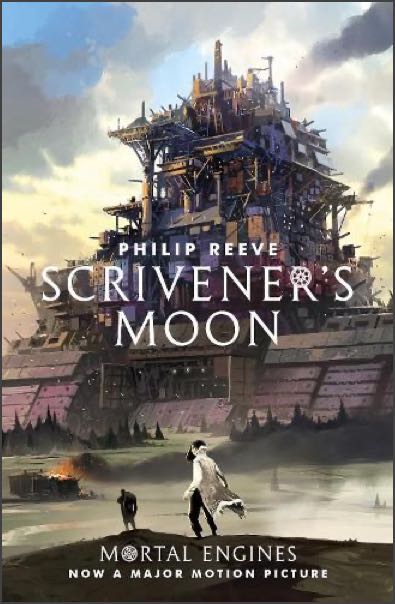
The final book in the Fever Crumb series. In this, London is aboard its vast traction engines and almost ready to begin its wandering future.
Fever and her mother travel north to investigate reports of an ancient pyramid which may contain a store of technology. On their way, however, they fall foul of a rebellion against the new masters of London. Fever finds herself a prisoner of a primive group of people led by a charismatic young woman called Cluny Morvish who is having visions of a mobile London coming to destroy the tribes of the north. They have thus joined with the rebels to march on London and destroy it before it can move.
Fever begins to suspect that Cluny’s visions are not prophesies from the gods but are due to the same cause as her own disturbing flashbacks: technology implanted by her Scriven grandfather. She persuades Cluny to help her investigate the ancient pyramid.
With her emotions still struggling against her rationalist upbringing, Fever finds that she is falling in love with Cluny. Disasters befall them and Fever finds herself caught in the middle as the two sides violently clash on the battlefield.
Hard to do justice to the fairly complicated plot of these books! But I enjoyed reading the whole series and may now go back and re-read the Mortal Engines quartet [which of course I’ve now finally done].
Very little! Some weeks the television set never gets turned on in our house.

Pleasant, relaxed series with Julia Zemiro in which she ambles along various walks in Australian locations, talking to First Nations people and others with information to share about the places she is walking through.
If you’d like to make a modest contribution to my efforts in this newsletter, I’d love it if you would buy me a coffee.
Want to comment? Please send an email to:

© Copyright 2024 by David R. Grigg
and licensed under Creative Commons License CC BY-ND 4.0.